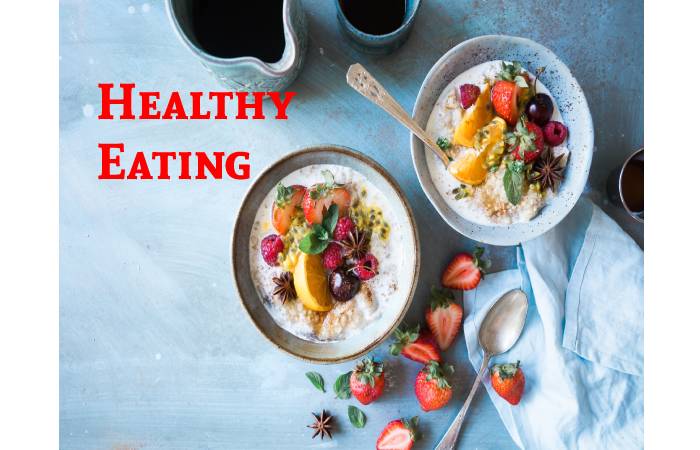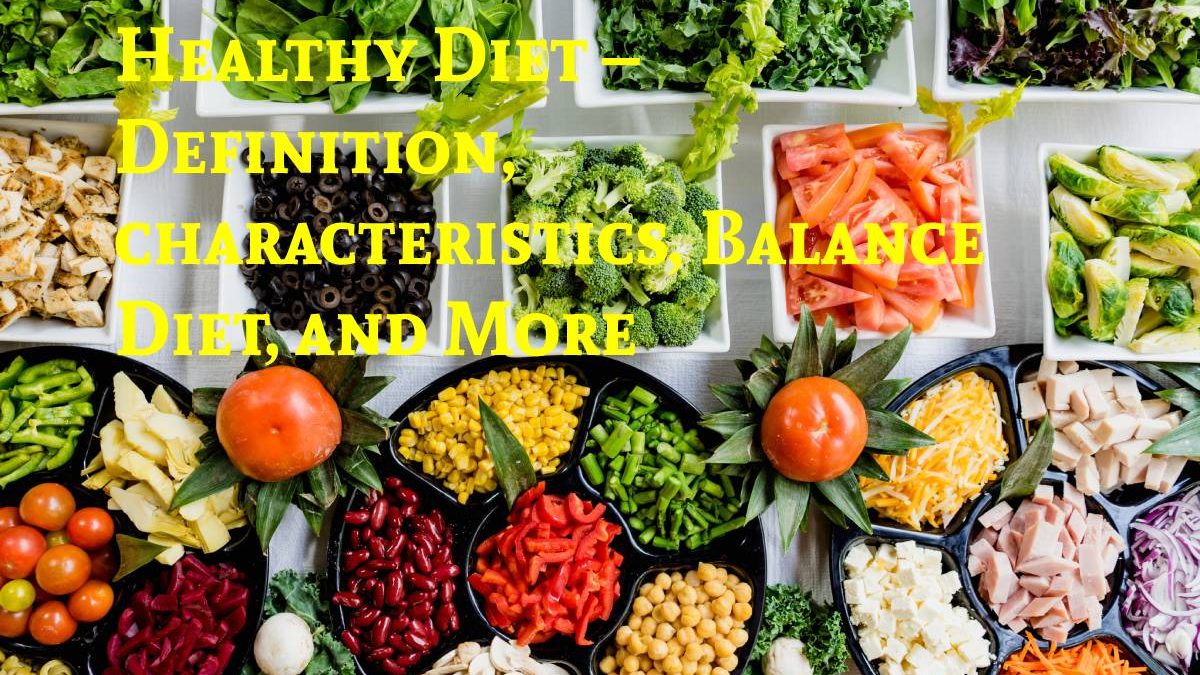Table of Contents
Definition
The definition of a healthy diet has continually changed, as nutrition is a science that is constantly evolving. For many years the word “diet” has been misuse to refer to food restriction (calorie restriction) or the consumption of small amounts or types of food to achieve weight loss. However, the word diet refers only to the sum of the foods consumed by a person or living organism during 24 hours. This diet is followed regularly in terms of composition, frequency and quantity. The amount of food and drink consumed is called the eating pattern.
Characteristics
The characteristics of a diet or eating pattern may vary according to the following factors: cultural, environmental, individual, economic, geographical area, and food availability, among others.
A healthy and correct diet has the following characteristics.
Complete: Containing all the nutrients. It is recommended to include at least one food from the three groups: vegetables and fruits, foods of animal origin, and cereals or substitutes.
They are balanced: The nutrients keep the right proportions to each other.
Harmless: Its habitual consumption does not imply health risks, so it must be free of harmful microorganisms, toxins, and contaminants and that excessive amounts of any nutrient are not consumed.
Proteins:
Proteins are made up of elements called amino acids and can be distinguished into two groups, non-essential amino acids so called because the body can produce them even when they are not obtained from food, and essential amino acids that the body cannot synthesize, Amino acids, and consequently proteins, are found both in vegetable products such as legumes, soybeans, cereals, nuts and other seeds, as well as in animal products such as meat, fish, dairy products and eggs.
Fats:
The fat content of foods is generally a mixture of the different groups, but one type of fat may predominate depending on the food; for example, oils derived from plants, nuts and seeds have higher amounts of monounsaturated and polyunsaturated fatty acids than saturated. Foods of animal origin, such as red meat, have more saturated than unsaturated fats and benefits.
Balance Diet
We are increasingly interested in knowing better the food we eat. We are especially interested in its composition and nutritional aspects to finally achieve a healthy and balanced diet that experts tell us so much about.
But what is a balanced diet? It contains all the nutrients necessary to reach an optimal state of nutrition. We need to provide calories in sufficient quantity for the development of our daily activity and the functioning of our body. Supply enough carbohydrates, proteins, fats, minerals and vitamins in the right measure. In addition, the amounts of the nutrients are proportionate to each other.
To learn more about the diet
Maintain a Healthy Weight.
We must know our body mass index (BMI) and try not to deviate excessively from the optimal range that corresponds to each person.
Eat the different varieties of food that are healthy for us.
The composition of the diet should be varied. And we should try to avoid foods with a high caloric content and provide us with few nutrients. E.g. A small bag of chips (45 grams) offers more than 200 kcal (10% of what an adult needs under standard conditions). A medium croissant (approx. 50 grams) provides more than 240 Kcal on average and contains a lot of fat (up to 30%), most of it saturated.
Try to eat more whole grains.
Whole grains promote our health, and fibre makes us feel full. However, refined flours remove fibre and some essential nutrients, such as vitamins and minerals.
Eat more fruits and vegetables.
The nutrients and antioxidants present in fruits and vegetables, incredibly raw, help protect us against many serious diseases, such as cardiovascular disease and cancer.
Reduce saturated fat and cholesterol.
Total fat content can be 30-35% of total energy, with saturated fat being less than 10%. It is worth knowing that a piece of industrial pastry contains 25% “pure fat” fat, mostly saturated. It is essential to read the food label.
Dietary cholesterol should be less than 300 mg/day. Excess saturated fat and cholesterol are not suitable for the heart. Skimmed milk is healthy because it provides calcium, avoiding saturated fats and cholesterol. Olive Oil should continue to be the fundamental fact in a healthy diet.
We must avoid foods and drinks that contain salt or hidden sugars
Among them are instant soups and concentrate broths. An envelope of dehydrate soup provides more than 3,300 mg of sodium, around 660 mg. per serving. That is 1.6 grams of salt per plate, 26% of the recommending daily salt for a healthy adult.
Avoid obesity in our children
We must introduce “good habits” from small, although sometimes it requires more effort. It would be desirable that we prepare a sandwich after school instead of the “usual bun”. And the same apply to juices, squeezing the oranges. A study on “packaged” juices for children has concluded that in addition to the low content of vitamins and minerals, the excess of sugars would be as high as canned soft drinks.
As appetizers, we should introduce more fruit and nuts
Fruit skewers and nuts are healthy snacks as long as they are consume moderately. Walnuts are already a typical dish, but due to their high caloric content, we should take them “instead of” and never “in addition to”. We must avoid crackers, not only because of the salt but also because of the hydrogenated fats or trans acids.
Avoid Tobacco
Half of the people who die due to smoking have lost 20 years of life. Cigarettes expose users to elevate levels of ultrafine particles and other toxins that can increase cardiovascular risk.
Perform physical exercise every day.
For our peace of mind, for those who cannot go to the gym, we suggest incorporating a little more activity into our daily lives, getting off the subway or the bus one or two stops earlier. It is recommends to walk briskly, at least 30 minutes daily. If we are at work, try to get up every 15 minutes. And if we are at home, try to spend more time standing than sitting the act of moving favours our health.
What is Healthy Eating?

Healthy eating provides each individual with all the food necessary to meet their nutritional needs at different stages of life (childhood, adolescence, adulthood and ageing). And in a healthy situation, keep in mind that this section refers to healthy eating in general, and you can use it as a basis for your daily diet. If you have specific symptoms related to the disease or treatment, you should go to the section on specific dietary recommendations.
Each person has nutritional requirements depending on their age, sex, height, physical activity that they develop and state of health.
To maintain health and prevent the onset of many diseases, you must follow a healthy lifestyle. You have to choose a balanced diet, do physical activity or exercise regularly (at least walk at least 30 minutes a day). And avoid smoking and drinking high-grade alcoholic beverages.
Conclusion
There is a great deal of scientific evidence to support that the intake of certain types of food . And eating patterns has a positive influence on health and promotes the prevention of chronic non-communicable diseases (NCDs). Which have been name “healthy diets” or “healthy diets”. Healthy eating patterns.
Also Read: Pimple – Reason, Tips, Home Remedies, and More


